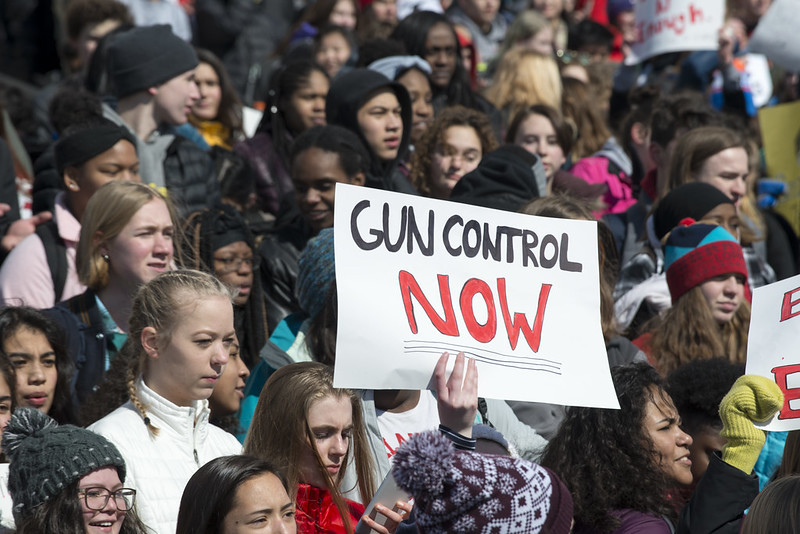Those working to change gun laws aren’t listening to women—here’s why and how that should change.

In the United States alone, gun violence kills at least two people every 15 minutes. But hundreds more—especially women—are left injured, disabled and traumatized.
The Trace, a non-partisan group that tracks U.S. gun sales, reports that in January alone just over two million guns were purchased by first-time buyers. Evidence shows that guns fuel the domestic violence epidemic—nearly 60 American women are killed with gun by a current or former partner every month. The fact is that women aren’t safe in their own homes when those homes contain guns.
The state of the relationship between gender and gun control is dismal. Even with this rise of violence against women and louder calls for gun control measures, the conversation in the U.S. has neglected to mention the need to address misogyny and gender–based violence. Internationally, several United Nations actions acknowledge the need for a gendered lens to gun control conversations, which on paper is progress, but feels performative in reality.
Women are disproportionately impacted by guns—so why aren’t they at the table to make policies and decisions to best protect themselves, their families and communities?
While it is now a widely accepted idea that women must be full and equal participants in governmental processes and initiatives, in practice, this is far from the reality. While there has been some progress, gun control initiatives remain largely a male domain, from the community level to international diplomacy to the technical aspects of weapons management. This reliance on traditional jobs for expertise leads to a one-sided approach to problem-solving.
Groups like the International Action Network on Small Arms (IANSA) Women’s Network—the only international network focused on the connections between gender, women’s rights and armed violence—have been advocating to ensure more women are participating on an international level. However, they can’t be the lone voices.
Women are still tokenized in this space. Gender equality helps everyone, yet there is little action to meaningfully work towards it. Here’s what we need to do to finally make a lasting change to protect women from gun violence and ensure their voices are heard:
- Participation is not a numbers game. It is not enough to have women included in the room; they must be actively involved in decision-making, guiding processes and taking on leadership roles and making meaningful contributions.
- Stop seeing women as one homogenous group. Actively make an intentional effort to ensure women with a wide background of experiences and social, economic and cultural backgrounds are included.
- Ensure the full, equal and meaningful participation and representation of women in all places where it counts. Recruit women, ensure policies are inclusive to keep them in their roles, and actively seek to bring women into negotiations, processes and decision-making.
- Don’t stop at just women. There need to be discussions on how to ensure other excluded or marginalized groups, including people with other gender and sexual identities are being heard as well.
Ending the gun violence crisis in our lifetimes needs to be done holistically and collaboratively. It is high time gun violence is recognized as an issue which disparately impacts women. The ending of gun violence cannot be done with only half the population, and that means having more women meaningfully at the table.
Up next:





